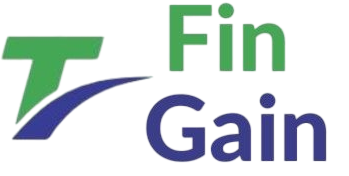In the vast tapestry of agriculture, subsistence farming emerges as a crucial thread that weaves together livelihoods, traditions, and sustenance. This article delves into the intricate world of subsistence farming, exploring its various forms, advantages, and challenges. From the tranquil fields of India to the lush landscapes of shifting cultivation, we journey through the heart of this essential practice.

The Essence of Subsistence Farming
Subsistence farming, a cornerstone of agriculture, revolves around the idea of self-sufficiency. It is a practice where farmers cultivate crops and raise livestock primarily to meet the needs of their families, with little to no surplus for commercial purposes. This age-old tradition seeks to produce just enough food to survive and thrive within the boundaries of one’s own community.
The Global Presence of Subsistence Farming
Subsistence farming is not confined by borders but rather flourishes in diverse corners of the world, especially in developing countries. Take India, for instance, where over 60% of farmers embrace subsistence farming as a way of life.
The Varied Forms of Subsistence Farming
The landscape of subsistence farming is as diverse as the communities that practice it. Local climate, soil conditions, and available resources play pivotal roles in shaping its forms. Let’s explore some common variations:
Shifting Cultivation
In regions with low population densities and ample land, shifting cultivation takes root. Here, farmers clear a small section of forest or bushland, sowing crops. After a few years, the soil becomes depleted, and farmers migrate to fresh pastures, continuing the cycle.
Plow Agriculture
Thriving in areas with fertile soil and higher population densities, plow agriculture relies on the use of plows to turn the earth and sow crops. This approach is more productive than shifting cultivation but demands more labour and capital.
Intensive Subsistence Farming
In areas with high population densities and limited land, intensive subsistence farming prevails. Farmers employ various techniques like irrigation, crop rotation, and terracing to maximize crop yields. While highly productive, it is also environmentally demanding.
The Tapestry of Advantages and Disadvantages
Subsistence farming weaves a complex tapestry of advantages and disadvantages, painting a vivid picture of its essence:
Advantages:
- Sustainability: A sustainable form of agriculture, adaptable to local conditions.
- Food Security: Ensures food security for farmers and their families.
- Cultural Continuity: A way of life passed down through generations.
Disadvantages:
- Low Productivity: May lead to poverty and hunger.
- Labor-Intensive: Requires extensive hours of toil.
- Vulnerability: Susceptible to weather shocks and pests.
- Environmental Impact: Can contribute to deforestation and environmental degradation.
Nurturing the Future of Subsistence Farming
While subsistence farming stands as a complex and demanding way of life, millions worldwide continue to embrace it. Various initiatives seek to enhance its productivity and sustainability. These include providing farmers with access to improved seeds, fertilizers, and irrigation.
In India, the government plays a pivotal role in supporting subsistence farmers through programs like the Pradhan Mantri Krishi Sinchai Yojana (PMKSY), which offers financial assistance for irrigation projects. Additionally, research and development efforts aim to enhance agricultural productivity.
Conclusion
The path ahead for subsistence farming in India remains uncertain, but with steadfast support, it can continue to play a vital role in nourishing the nation’s populace. This age-old tradition, rooted in self-sufficiency and community, is a testament to human resilience and resourcefulness.
Frequently Asked Questions
What is the primary goal of subsistence farming? The primary goal of subsistence farming is to produce enough food to meet the needs of the farming family and community, with minimal surplus for sale or trade.
How does shifting cultivation differ from plow agriculture? Shifting cultivation involves clearing small forested areas and relocating periodically, while plow agriculture relies on fertile soil and plowing techniques for cultivation.
What are the advantages of subsistence farming? Subsistence farming is sustainable, ensures food security, and preserves cultural traditions.
What are the disadvantages of subsistence farming? Disadvantages include low productivity, labor-intensiveness, vulnerability to environmental factors, and potential environmental impact.
How is the Indian government supporting subsistence farmers? The Indian government supports subsistence farmers through programs like the Pradhan Mantri Krishi Sinchai Yojana (PMKSY), offering financial aid for irrigation projects and investing in research and development to boost agricultural productivity.
In the vast tapestry of agriculture, subsistence farming emerges as a crucial thread that weaves together livelihoods, traditions, and sustenance. This article delves into the intricate world of subsistence farming, exploring its various forms, advantages, and challenges. From the tranquil fields of India to the lush landscapes of shifting cultivation, we journey through the heart of this essential practice.

The Essence of Subsistence Farming
Subsistence farming, a cornerstone of agriculture, revolves around the idea of self-sufficiency. It is a practice where farmers cultivate crops and raise livestock primarily to meet the needs of their families, with little to no surplus for commercial purposes. This age-old tradition seeks to produce just enough food to survive and thrive within the boundaries of one’s own community.
The Global Presence of Subsistence Farming
Subsistence farming is not confined by borders but rather flourishes in diverse corners of the world, especially in developing countries. Take India, for instance, where over 60% of farmers embrace subsistence farming as a way of life.
The Varied Forms of Subsistence Farming
The landscape of subsistence farming is as diverse as the communities that practice it. Local climate, soil conditions, and available resources play pivotal roles in shaping its forms. Let’s explore some common variations:
Shifting Cultivation
In regions with low population densities and ample land, shifting cultivation takes root. Here, farmers clear a small section of forest or bushland, sowing crops. After a few years, the soil becomes depleted, and farmers migrate to fresh pastures, continuing the cycle.
Plow Agriculture
Thriving in areas with fertile soil and higher population densities, plow agriculture relies on the use of plows to turn the earth and sow crops. This approach is more productive than shifting cultivation but demands more labour and capital.
Intensive Subsistence Farming
In areas with high population densities and limited land, intensive subsistence farming prevails. Farmers employ various techniques like irrigation, crop rotation, and terracing to maximize crop yields. While highly productive, it is also environmentally demanding.
The Tapestry of Advantages and Disadvantages
Subsistence farming weaves a complex tapestry of advantages and disadvantages, painting a vivid picture of its essence:
Advantages:
- Sustainability: A sustainable form of agriculture, adaptable to local conditions.
- Food Security: Ensures food security for farmers and their families.
- Cultural Continuity: A way of life passed down through generations.
Disadvantages:
- Low Productivity: May lead to poverty and hunger.
- Labor-Intensive: Requires extensive hours of toil.
- Vulnerability: Susceptible to weather shocks and pests.
- Environmental Impact: Can contribute to deforestation and environmental degradation.
Nurturing the Future of Subsistence Farming
While subsistence farming stands as a complex and demanding way of life, millions worldwide continue to embrace it. Various initiatives seek to enhance its productivity and sustainability. These include providing farmers with access to improved seeds, fertilizers, and irrigation.
In India, the government plays a pivotal role in supporting subsistence farmers through programs like the Pradhan Mantri Krishi Sinchai Yojana (PMKSY), which offers financial assistance for irrigation projects. Additionally, research and development efforts aim to enhance agricultural productivity.
Conclusion
The path ahead for subsistence farming in India remains uncertain, but with steadfast support, it can continue to play a vital role in nourishing the nation’s populace. This age-old tradition, rooted in self-sufficiency and community, is a testament to human resilience and resourcefulness.
Frequently Asked Questions
What is the primary goal of subsistence farming? The primary goal of subsistence farming is to produce enough food to meet the needs of the farming family and community, with minimal surplus for sale or trade.
How does shifting cultivation differ from plow agriculture? Shifting cultivation involves clearing small forested areas and relocating periodically, while plow agriculture relies on fertile soil and plowing techniques for cultivation.
What are the advantages of subsistence farming? Subsistence farming is sustainable, ensures food security, and preserves cultural traditions.
What are the disadvantages of subsistence farming? Disadvantages include low productivity, labor-intensiveness, vulnerability to environmental factors, and potential environmental impact.
How is the Indian government supporting subsistence farmers? The Indian government supports subsistence farmers through programs like the Pradhan Mantri Krishi Sinchai Yojana (PMKSY), offering financial aid for irrigation projects and investing in research and development to boost agricultural productivity.
In the vast tapestry of agriculture, subsistence farming emerges as a crucial thread that weaves together livelihoods, traditions, and sustenance. This article delves into the intricate world of subsistence farming, exploring its various forms, advantages, and challenges. From the tranquil fields of India to the lush landscapes of shifting cultivation, we journey through the heart of this essential practice.

The Essence of Subsistence Farming
Subsistence farming, a cornerstone of agriculture, revolves around the idea of self-sufficiency. It is a practice where farmers cultivate crops and raise livestock primarily to meet the needs of their families, with little to no surplus for commercial purposes. This age-old tradition seeks to produce just enough food to survive and thrive within the boundaries of one’s own community.
The Global Presence of Subsistence Farming
Subsistence farming is not confined by borders but rather flourishes in diverse corners of the world, especially in developing countries. Take India, for instance, where over 60% of farmers embrace subsistence farming as a way of life.
The Varied Forms of Subsistence Farming
The landscape of subsistence farming is as diverse as the communities that practice it. Local climate, soil conditions, and available resources play pivotal roles in shaping its forms. Let’s explore some common variations:
Shifting Cultivation
In regions with low population densities and ample land, shifting cultivation takes root. Here, farmers clear a small section of forest or bushland, sowing crops. After a few years, the soil becomes depleted, and farmers migrate to fresh pastures, continuing the cycle.
Plow Agriculture
Thriving in areas with fertile soil and higher population densities, plow agriculture relies on the use of plows to turn the earth and sow crops. This approach is more productive than shifting cultivation but demands more labour and capital.
Intensive Subsistence Farming
In areas with high population densities and limited land, intensive subsistence farming prevails. Farmers employ various techniques like irrigation, crop rotation, and terracing to maximize crop yields. While highly productive, it is also environmentally demanding.
The Tapestry of Advantages and Disadvantages
Subsistence farming weaves a complex tapestry of advantages and disadvantages, painting a vivid picture of its essence:
Advantages:
- Sustainability: A sustainable form of agriculture, adaptable to local conditions.
- Food Security: Ensures food security for farmers and their families.
- Cultural Continuity: A way of life passed down through generations.
Disadvantages:
- Low Productivity: May lead to poverty and hunger.
- Labor-Intensive: Requires extensive hours of toil.
- Vulnerability: Susceptible to weather shocks and pests.
- Environmental Impact: Can contribute to deforestation and environmental degradation.
Nurturing the Future of Subsistence Farming
While subsistence farming stands as a complex and demanding way of life, millions worldwide continue to embrace it. Various initiatives seek to enhance its productivity and sustainability. These include providing farmers with access to improved seeds, fertilizers, and irrigation.
In India, the government plays a pivotal role in supporting subsistence farmers through programs like the Pradhan Mantri Krishi Sinchai Yojana (PMKSY), which offers financial assistance for irrigation projects. Additionally, research and development efforts aim to enhance agricultural productivity.
Conclusion
The path ahead for subsistence farming in India remains uncertain, but with steadfast support, it can continue to play a vital role in nourishing the nation’s populace. This age-old tradition, rooted in self-sufficiency and community, is a testament to human resilience and resourcefulness.
Frequently Asked Questions
What is the primary goal of subsistence farming? The primary goal of subsistence farming is to produce enough food to meet the needs of the farming family and community, with minimal surplus for sale or trade.
How does shifting cultivation differ from plow agriculture? Shifting cultivation involves clearing small forested areas and relocating periodically, while plow agriculture relies on fertile soil and plowing techniques for cultivation.
What are the advantages of subsistence farming? Subsistence farming is sustainable, ensures food security, and preserves cultural traditions.
What are the disadvantages of subsistence farming? Disadvantages include low productivity, labor-intensiveness, vulnerability to environmental factors, and potential environmental impact.
How is the Indian government supporting subsistence farmers? The Indian government supports subsistence farmers through programs like the Pradhan Mantri Krishi Sinchai Yojana (PMKSY), offering financial aid for irrigation projects and investing in research and development to boost agricultural productivity.
In the vast tapestry of agriculture, subsistence farming emerges as a crucial thread that weaves together livelihoods, traditions, and sustenance. This article delves into the intricate world of subsistence farming, exploring its various forms, advantages, and challenges. From the tranquil fields of India to the lush landscapes of shifting cultivation, we journey through the heart of this essential practice.

The Essence of Subsistence Farming
Subsistence farming, a cornerstone of agriculture, revolves around the idea of self-sufficiency. It is a practice where farmers cultivate crops and raise livestock primarily to meet the needs of their families, with little to no surplus for commercial purposes. This age-old tradition seeks to produce just enough food to survive and thrive within the boundaries of one’s own community.
The Global Presence of Subsistence Farming
Subsistence farming is not confined by borders but rather flourishes in diverse corners of the world, especially in developing countries. Take India, for instance, where over 60% of farmers embrace subsistence farming as a way of life.
The Varied Forms of Subsistence Farming
The landscape of subsistence farming is as diverse as the communities that practice it. Local climate, soil conditions, and available resources play pivotal roles in shaping its forms. Let’s explore some common variations:
Shifting Cultivation
In regions with low population densities and ample land, shifting cultivation takes root. Here, farmers clear a small section of forest or bushland, sowing crops. After a few years, the soil becomes depleted, and farmers migrate to fresh pastures, continuing the cycle.
Plow Agriculture
Thriving in areas with fertile soil and higher population densities, plow agriculture relies on the use of plows to turn the earth and sow crops. This approach is more productive than shifting cultivation but demands more labour and capital.
Intensive Subsistence Farming
In areas with high population densities and limited land, intensive subsistence farming prevails. Farmers employ various techniques like irrigation, crop rotation, and terracing to maximize crop yields. While highly productive, it is also environmentally demanding.
The Tapestry of Advantages and Disadvantages
Subsistence farming weaves a complex tapestry of advantages and disadvantages, painting a vivid picture of its essence:
Advantages:
- Sustainability: A sustainable form of agriculture, adaptable to local conditions.
- Food Security: Ensures food security for farmers and their families.
- Cultural Continuity: A way of life passed down through generations.
Disadvantages:
- Low Productivity: May lead to poverty and hunger.
- Labor-Intensive: Requires extensive hours of toil.
- Vulnerability: Susceptible to weather shocks and pests.
- Environmental Impact: Can contribute to deforestation and environmental degradation.
Nurturing the Future of Subsistence Farming
While subsistence farming stands as a complex and demanding way of life, millions worldwide continue to embrace it. Various initiatives seek to enhance its productivity and sustainability. These include providing farmers with access to improved seeds, fertilizers, and irrigation.
In India, the government plays a pivotal role in supporting subsistence farmers through programs like the Pradhan Mantri Krishi Sinchai Yojana (PMKSY), which offers financial assistance for irrigation projects. Additionally, research and development efforts aim to enhance agricultural productivity.
Conclusion
The path ahead for subsistence farming in India remains uncertain, but with steadfast support, it can continue to play a vital role in nourishing the nation’s populace. This age-old tradition, rooted in self-sufficiency and community, is a testament to human resilience and resourcefulness.
Frequently Asked Questions
What is the primary goal of subsistence farming? The primary goal of subsistence farming is to produce enough food to meet the needs of the farming family and community, with minimal surplus for sale or trade.
How does shifting cultivation differ from plow agriculture? Shifting cultivation involves clearing small forested areas and relocating periodically, while plow agriculture relies on fertile soil and plowing techniques for cultivation.
What are the advantages of subsistence farming? Subsistence farming is sustainable, ensures food security, and preserves cultural traditions.
What are the disadvantages of subsistence farming? Disadvantages include low productivity, labor-intensiveness, vulnerability to environmental factors, and potential environmental impact.
How is the Indian government supporting subsistence farmers? The Indian government supports subsistence farmers through programs like the Pradhan Mantri Krishi Sinchai Yojana (PMKSY), offering financial aid for irrigation projects and investing in research and development to boost agricultural productivity.








